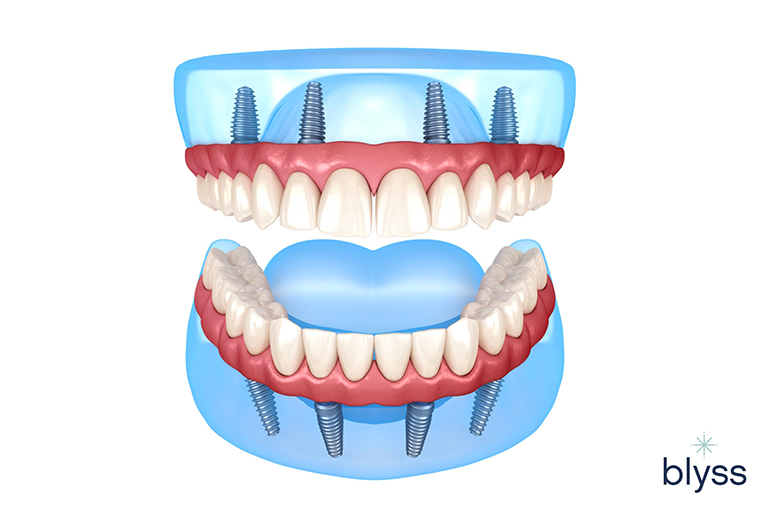The Definitive Guide for Dental Sense
The Definitive Guide for Dental Sense
Blog Article
The 6-Second Trick For Dental Sense
Table of ContentsSee This Report about Dental SenseThe Single Strategy To Use For Dental SenseThe Dental Sense StatementsDental Sense Things To Know Before You Buy
are medical devices operatively dental implanted right into the jaw to restore a person's capability to chew or their look. They give assistance for synthetic (fake) teeth, such as crowns, bridges, or dentures. When a tooth is shed due to injury or illness, a person can experience difficulties such as fast bone loss, defective speech, or changes to eating patterns that cause pain.Dental dental implant systems contain an oral implant body and oral implant joint and may also consist of an abutment addiction screw. Root canal procedure. The oral implant body is operatively placed in the jawbone in location of the tooth's root. The dental implant joint is typically affixed to the dental implant body by the abutment fixation screw and prolongs with gum tissues right into the mouth to support the attached fabricated teeth
(https://dentalsense1.bandcamp.com/album/dental-sense)Structure of The Dental Implant System picking oral implants, talk to your oral provider concerning the prospective benefits and threats, and whether you are a prospect for the procedure. Things to take into consideration: Your total health is a vital element in establishing whether you are a great prospect for oral implants, the length of time it will certainly take to heal, and just how long the dental implant might stay in place.
Smoking might impact the recovery process and lower the long-term success of the dental implant. The healing process for the dental implant body might take a number of months or longer, during which time you typically have a short-lived joint in place of the tooth. the dental implant procedure: Thoroughly adhere to the dental hygiene directions provided to you by your oral copyright.
8 Easy Facts About Dental Sense Explained
Implant failure can result in the requirement for one more operation to fix or change the dental implant system. Recovers the ability to eat Brings back cosmetic look Aids maintain the jawbone from diminishing as a result of bone loss Protects the wellness of the surrounding bone and gums Assists maintain surrounding (neighboring) teeth secure Boosts quality of life Damage to bordering all-natural teeth throughout implant positioning Injury to the surrounding tissues throughout surgical procedure, such as sinus perforation Injury throughout surgery (as an example, crack of surrounding jawbone) Inadequate feature, such as really feeling like the teeth do not bite with each other generally An experience that the tooth hangs or twisting in position resulting from a joint screw loosening up Implant body failure (looseness of the dental implant body) as a result of systemic infection, view it now which may be more probable in individuals with unrestrained diabetes because of regional infection in bone and periodontals supporting the implant body due to delayed healing, which may be most likely in people who smoke Trouble cleansing the periodontals around the implant, resulting in inadequate oral health Untreated periodontal illness Post-surgical numbness due to nerve impingement or damages Always inform health care carriers and imaging service technicians that you have dental implants before any type of magnetic resonance imaging (MRI) or x-ray treatments.
FDA is not aware of any kind of adverse events reported for MRI or x-ray procedures with oral implants. Dental implants systems are normally made from materials that adhere to worldwide consensus requirements of the International Organization for Standardization (ISO) or ASTM International. These requirements have information of what makes a secure material.

A dental implant is a framework that replaces a missing tooth. With screw-like tools, the cosmetic surgeon inserts a dental implant right into the jawbone, and it acts as a support for a fabricated tooth, called a crown.
The Ultimate Guide To Dental Sense
Some people are not eligible for dental implant surgical treatment. It is for oral cosmetic surgeons to run on individuals with: acute illnessuncontrollable metabolic diseasebone or soft tissue illness or infectionIf these concerns are fixed, an individual can have the surgical treatment. In, oral specialists avoid operating on people with: If individuals with any of the above go through oral implant surgical treatment, there is a greater threat of the dental implant stopping working.

Dental implant surgical treatment is a tailored procedure. Provide you time to recover. Attach the post and final crown, bridge or denture.
Next off, your surgeon will carefully position the oral implant into your jaw. Lastly, your surgeon will reposition your periodontals and close the cut with stitches. If your implant is near the front of your mouth, your dental practitioner will make a temporary tooth for you to wear until you heal. In this way, you won't have a gap in your smile while you recover.
Getting The Dental Sense To Work
Your company can inform you what to expect in your circumstance. Throughout the healing phase, your jawbone ought to fuse to the oral implant. This process, called osseointegration, is critical for security and long-lasting success. This procedure can take anywhere from three to nine months. Sometimes, it might take longer.
As soon as your implant heals, your dental practitioner can attach the joint (little connector article) and your last remediation (crown, bridge or denture). This generally takes regarding one hour to complete and might call for a 2nd minor surgical procedure. You shouldn't really feel any discomfort throughout your dental implant treatment because your service provider will make use of medicine to numb your gum tissues.
Report this page